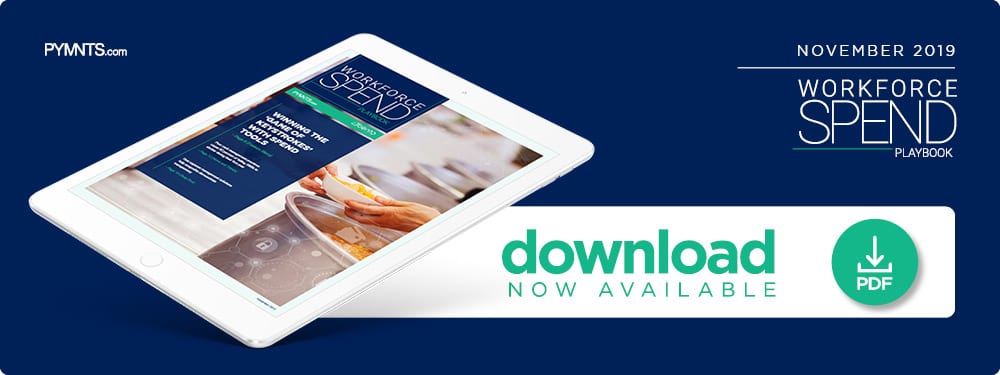Winning The ‘Game Of Keystrokes’ With Spend Tools

In providing Thanksgiving meals to communities in need this week, missing receipts or misspent funds can eat away at resources. These are issues the Greater Boston Food Bank has tried to resolve with spend and fuel cards to make expense management more seamless. In the new Workforce Spend Playbook, GBFB Chief Financial Officer David Noymer explains how spend tools help the organization deliver 57 million meals annually and remain mission-focused instead of chasing receipts.
Millions of U.S. households prepare to visit local grocery stores for large family meals as the holiday season rolls in, and many nonprofit organizations are doing the same for households that cannot afford such expenses. The Greater Boston Food Bank (GBFB) is one such organization fighting community hunger. Headquartered in Boston, the group serves over 500 pantries and programs in 190 cities and towns across eastern Massachusetts and distributes nearly 57 million meals annually.
Serving meals to those in need requires a large staff and volunteer network to be in the field soliciting food donations, delivering them to the organization’s 120,000-square-foot warehouse and distributing them to their intended recipients. Spend management solutions are key to ensuring that GBFB is able to focus on its mission instead of chasing down receipts, said Chief Financial Officer David Noymer.
He recently spoke to PYMNTS about how corporate and fuel cards enable GBFB staff to do their jobs effectively and demonstrate appropriate use of funds.
“Our job is to be very respectful and [understand] that we are stewards of the donors’ dollars,” Noymer said. “If we can make [processes as] quick, efficient and as cost-effective as possible and have our people focus on what we do best … then we’re doing a good thing.”
The ‘Game of Keystrokes’ Strategy
Noymer said the GBFB has approximately 25 corporate cards in the hands of the organization’s senior leadership and mid-level staff. These cards, as well as fuel cards that can only be used to make gas and diesel purchases, enable the nonprofit to focus on its mission without having to worry about reimbursing staff for out-of-pocket expenses.
“[Our work] is a game of keystrokes,” Noymer said. “If people have to do fewer keystrokes in terms of submitting an expense report, great.”
The corporate cards are most often used to purchase educational materials like pamphlets or nutritional guides for food pantries. They are electronically linked to an employee expense reporting system, Expensify, which sorts expenses into the appropriate spend categories.
“There are fewer keystrokes because Expensify packages all the reporting tools and does so in a paperless manner,” he said. “We are completely paperless when it comes to expense reporting.”
The cards also help GBFB see how staff members in the field are spending funds, providing insights to management indicating whether team members are using them as the organization intends. Noymer noted that the cards have controls in place to prevent purchases of big-ticket or non-approved items such as jewelry.
Putting Fuel Cards on the Road
Corporate cards are not the only spend tool in GBFB’s arsenal. The nonprofit also provides employees who drive the organization’s vehicles with control-embedded fuel cards. Those cards can only be used to buy gasoline and diesel, ensuring that when employees stop to fill their tanks, they are not tacking on additional products and letting the organization foot the bill.
“From a management perspective, we are comfortable knowing that those team members are only buying fuel because we know they cannot buy anything else,” Noymer said.
He added that the cards’ built-in controls require drivers to enter unique personal identification numbers (PINs) at the gas pump, preventing abuse by uniquely identifying card users. Additional required data includes the vehicle’s latest odometer reading and license plate. The cards will thus detect when a driver attempts to enter details from their personal vehicles and deny the transactions.
Noymer emphasized the importance for nonprofits like GBFB to understand exactly how funds are spent. The expense reporting capabilities and controls enable the organization to illustrate effective spending practices to oversight groups such as external auditors, the Massachusetts attorney general and tax return preparers. The group’s audited financial details and tax returns are posted on their website.
“We are very much an open book,” Noymer said. “These tools, all of them, are part of the many steps we use to ensure that we’re good stewards of the donors’ dollars. They make us efficient and keep us focused on what we’re really here to do.”
Both corporate and fuel cards enable the organization to focus on its core mission of providing meals to those in need rather than spending time tracking down and sorting personal and professional purchases.
“We are confident that people are spending money, and spending it properly and appropriately,” Noymer said. “We want to empower [workers] to make good decisions, but not restrict them so much that [our measures prevent] them from doing their jobs. [That] is the delicate balance we are trying to achieve.”
Organizations like GBFB will be working to ensure that as many people as possible share warm and nutritious meals as families reunite for the holidays. The right set of spend tools can make nonprofits themselves grateful as they focus on fulfilling their missions.

